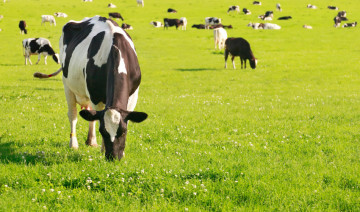
Summer Grazing: Maximizing Pasture Health for Livestock
As the sun rises higher in the summer sky and pastures burst into lush greenery, farmers and ranchers are presented with a prime opportunity to optimize grazing conditions for their livestock. Maximizing pasture health during the summer months not only ensures ample nutrition for your animals but also contributes to the sustainability of your operation. In this blog, we'll delve into essential tips for summer grazing, guiding you towards achieving optimal pasture health and maximizing the well-being of your livestock.
1. Rotational Grazing:
Implement rotational grazing practices to prevent overgrazing and promote regrowth. Divide pastures into smaller paddocks and rotate livestock through them regularly. This allows for rest periods, giving grasses time to recover and regrow, ultimately improving pasture health.
2. Monitor Grazing Intensity:
Keep a close eye on grazing intensity to prevent excessive pressure on your pastures. Avoid allowing livestock to graze too low, as this can damage grass root systems and hinder regrowth. Adjust stocking densities as needed to maintain a healthy balance between grazing and recovery.
3. Strategic Water Access:
Ensure convenient access to fresh, clean water sources throughout your pastures. Proper hydration is essential for livestock health, especially during hot summer months. Strategically place water troughs or install portable water systems to encourage even grazing distribution across your pastures.
4. Supplemental Feeding:
While lush summer pastures provide ample nutrition, consider supplementing with minerals or salt blocks to meet your livestock's dietary needs fully. Consult with a nutritionist to determine the appropriate supplements based on your pasture composition and animal requirements.
5. Restoration and Renovation:
Take advantage of the summer growing season to restore and renovate pastures. Consider overseeding with desirable forage species or implementing soil conservation practices to improve soil health and productivity. Conduct soil tests to identify nutrient deficiencies and adjust accordingly.
6. Weed Management:
Combat invasive weeds that can compete with desirable forage species for resources. Implement integrated weed management strategies, including mowing, grazing, and targeted herbicide applications, to control weed populations and maintain pasture health.
7. Seasonal Forage Planning:
Plan for seasonal variations in forage quality and availability. Monitor grass growth rates and adjust grazing schedules accordingly to optimize forage utilization. Consider stockpiling forage in late summer for fall and winter grazing, ensuring consistent nutrition throughout the year.
8. Drought Preparedness:
Develop drought contingency plans to mitigate the impact of dry spells on pasture health. Implement water conservation measures, such as efficient irrigation systems or water storage solutions, to sustain pasture growth during periods of water scarcity.
9. Soil Health Management:
Invest in soil health management practices to support vibrant pastures. Implement practices such as rotational grazing, cover cropping, and organic amendments to improve soil structure, fertility, and microbial activity, ultimately enhancing pasture productivity and resilience.
10. Regular Monitoring and Evaluation:
Continuously monitor pasture conditions and livestock performance throughout the summer grazing season. Assess pasture health, forage availability, and livestock body condition regularly, making adjustments as needed to optimize grazing management practices.
Summer grazing presents an opportunity for farmers and ranchers to optimize pasture health and maximize livestock nutrition. By implementing rotational grazing, monitoring grazing intensity, providing strategic water access, and supplementing as needed, you can ensure your pastures remain vibrant and productive throughout the summer months. Incorporating practices for pasture restoration, weed management, and soil health further enhances the sustainability of your operation. With careful planning, monitoring, and management, you can harness the full potential of summer grazing to support the well-being of your livestock and the long-term health of your farm or ranch.
